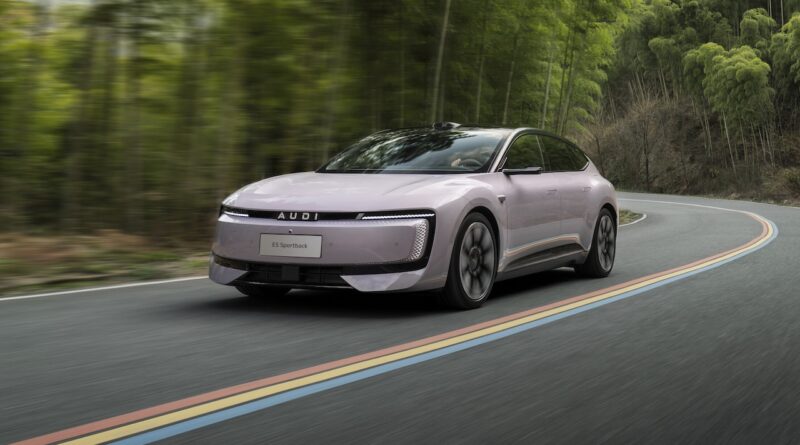
Australia’s EV landscape is shifting fast – more models, growing charging networks and renewed debate over policy and public perception are all reshaping how Australians think about electric cars. For drivers, fleet managers and policymakers, the next 12-24 months will be critical: choice is expanding, costs are beginning to come down, and infrastructure investment is moving centre stage even as state-level incentives have diminished.
New models and new brands: more choice, more competition
Recent Australian EV news includes the arrival of new models like the Zeekr 7X and increased choice in the Volkswagen ID. range, alongside new options like the Polestar 2 MY26 with more range, and potential sales increases due to falling costs and new models from brands like Honda and Mazda. The government’s focus on infrastructure continues, but state support for EV uptake has been withdrawn, prompting calls for more incentives. There is also a growing trend of misinformation regarding EVs, with a recent study indicating that conspiracy mentality is a significant factor.
The Australian market is seeing a clear influx of new battery-electric models and entrants, broadening options across price points and body styles.
- Expanded line-ups from established brands: Volkswagen has broadened its EV offering with the full ID.4 and ID.5 SUV range now available in Australia, giving buyers mainstream crossover options that compete on range, space and dealer support. Polestar has updated the Polestar 2 for MY26 with improvements to range and charging capability, sharpening its appeal to buyers seeking a premium but practical EV.
- New entrants and Chinese marques: The arrival of the Zeekr 7X – and reports that additional Chinese brands are preparing Australian launches – is increasing competition and putting pressure on incumbent marques to sharpen pricing and equipment levels. These entrants bring feature-rich packages that appeal to tech-oriented buyers and fleet purchasers.
- Performance and capability upgrades: High-performance models continue to evolve; manufacturers are enhancing range and faster charging across the portfolio, with newer Model Years targeting quicker DC charging rates and higher usable range figures. These technical improvements reduce one of the core barriers to adoption: real-world usability for longer trips.
- Broader segments: Beyond SUVs and performance cars, expect more small city EVs and utes to appear as manufacturers respond to Australian consumer preferences and fleet demand. Local charging compatibility, payload, towing ratings and after-sales support will be decisive factors for tradespeople and business fleets.
Market trends and policy: infrastructure takes priority, incentives in flux
A decisive theme in Australia’s EV transition is the shift from direct consumer incentives to a focus on the enabling infrastructure that supports mass adoption.
- Federal infrastructure investment: The 2023 federal budget committed significant funds to a national fast-charging network. That directional support aims to build out corridors and regional links to reduce range anxiety and support cross-state travel. Industry reporting and advocacy groups note the federal push is essential, particularly for inter-city and regional coverage.
- State-level support pulled back: Several state governments have scaled back or withdrawn consumer-facing rebates and incentives, a development the Electric Vehicle Council (EVC) says risks slowing private uptake in the near term. The net effect has been a more patchwork policy environment across the states, with buyers now weighing vehicle cost savings against long-term running-cost benefits.
- Falling vehicle costs and buyer behaviour: Manufacturing scale, intensified competition from new entrants and downward pressure on battery prices are starting to reduce sticker prices for EVs. However, some prospective buyers are delaying purchases, expecting further price falls – a common dynamic in fast-changing technology markets that can temporarily flatten demand.
- Charging network growth: Investment in a national fast-charging network continues, and industry tallies indicate more than 1,000 fast-charging sites are now operational across Australia. The focus is increasingly on a resilient, interoperable network with consistent payment systems and joined-up planning between federal and state governments, local councils and private operators.
- Fleet electrification: With operational cost savings and emissions targets in play, fleets remain a major near-term growth driver. Businesses are progressively integrating EV procurement, total cost of ownership modelling and depot charging infrastructure into procurement strategies.
Public perceptions and misinformation: the information battle
As hardware and policy advance, the narrative in the public sphere matters. New research highlights how misinformation – and the sociology behind it – affects acceptance.
- Conspiracy mentality vs knowledge gaps: Recent studies indicate that a predisposition to conspiratorial thinking and suspicion of institutions is a stronger predictor of EV misinformation uptake than simple lack of technical knowledge. That suggests public education campaigns must do more than provide facts; they must build trust and address underlying concerns about motives, transparency and transition impacts.
- Media distortions and selective narratives: Misleading or partial reporting can amplify myths about battery fires, range limitations or lifecycle emissions. Balanced, evidence-based journalism and industry transparency are essential to counter selective narratives and help consumers make informed choices.
- Practical consumer concerns still matter: Aside from misinformation, genuine questions remain – charging access in apartments and regional towns, upfront cost, servicing networks and resale values. Addressing these practical barriers through policy and market solutions will be as important as countering erroneous claims.
What this means for Australian drivers and buyers
- Buyers: If you’re in the market now, choice and value are improving. Consider total cost of ownership, charging access at home and work, warranty and dealer support. For those who can charge at home, the case for an EV is increasingly compelling.
- Fleets: Now is the time to run pilots, invest in depot charging and refine procurement practices. Economies of scale in fleet purchases will accelerate fleet electrification and unlock stronger commercial propositions.
- Policymakers: Continued investment in a reliable national fast-charging network and consistent, transparent policy signals will be pivotal. Reintroducing targeted incentives or tax measures could accelerate uptake, particularly for lower-income households and small business fleets.
- Industry: Manufacturers and charging operators must collaborate to ensure standards, payment interoperability and equitable coverage across metro and regional areas.
Conclusion
Australia’s EV transition is no longer a distant prospect – it’s an active market transformation driven by new models, falling costs and a stronger charging backbone. Yet obstacles remain: inconsistent policy across states, lingering public mistrust fuelled by misinformation, and the practical challenges of charging for apartment dwellers and regional drivers. Success over the next phase will depend on joined-up policy, responsible industry behaviour and clear, trustworthy information for consumers. For those considering an EV purchase, the balance of evidence suggests increasing value and practicality – but do your homework on charging access, total ownership costs and local support before you buy.
FAQs
Q: Are EVs cheaper to run than petrol cars in Australia?
A: Generally, yes. Electricity cost per kilometre is typically lower than petrol, and EVs have fewer moving parts so servicing costs can be lower. Real savings depend on local electricity rates, charging patterns and whether you can charge at home or use public fast chargers frequently.
Q: How widespread is fast charging across Australia?
A: Fast-charging coverage has expanded rapidly, with over 1,000 fast-charging sites reported nationally. Coverage is strongest along major highways and in metropolitan areas, but regional and remote charging gaps remain and are a focus of federal infrastructure investment.
Q: Should I wait for prices to fall further before buying an EV?
: That depends on your circumstances. Prices are trending down and more models are imminent, but waiting carries opportunity costs (fuel savings, lower maintenance, emissions reduction). If you need a vehicle now and it meets your needs, current models are increasingly competitive.
Q: What about EV incentives in Australia?
A: The federal government has prioritised charging infrastructure spending, while several states have scaled back or removed direct consumer incentives. Incentive availability varies by state and may include registration discounts, stamp duty reductions or rebates in some jurisdictions – check your state government’s current offerings.
Q: How do I charge if I live in an apartment?
A: Apartment residents face a common barrier. Options include negotiating shared chargers with your body corporate, installing private charger access where possible, using workplace charging, or relying on the growing public fast-charger network. Policy solutions are evolving to make apartment charging easier.
Q: Are EVs more environmentally friendly when considering manufacturing and battery production?
A: EVs typically have higher emissions during manufacturing (mainly due to batteries) but lower operational emissions. Over the vehicle’s life, especially when charged with cleaner electricity, EVs usually have a lower carbon footprint than internal combustion vehicles.
About EV Evolution
EV Evolution is the leading online platform dedicated to Australian electric vehicle owners and enthusiasts. We foster a vibrant community, delivering essential EV news and insights, and enhancing user engagement through our innovative, AI-powered chatbot for dynamic discussions. Our mission is to empower Australian electric vehicle owners and enthusiasts by fostering a vibrant, AI-driven online community that connects, informs, and advances the nation’s electric vehicle landscape.




